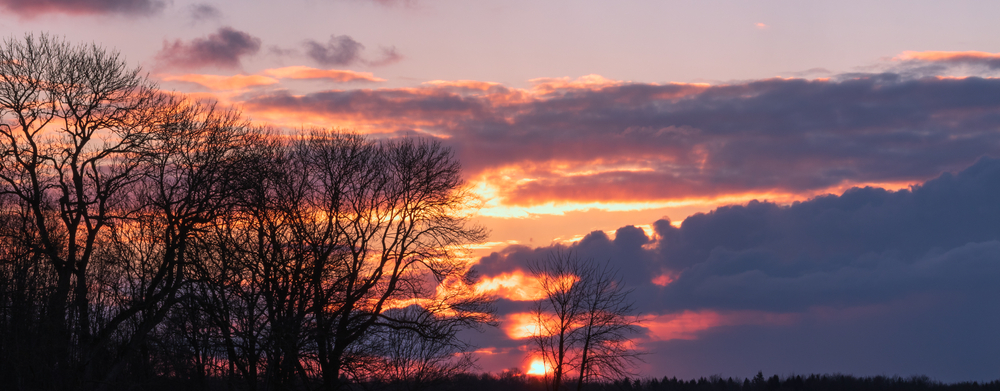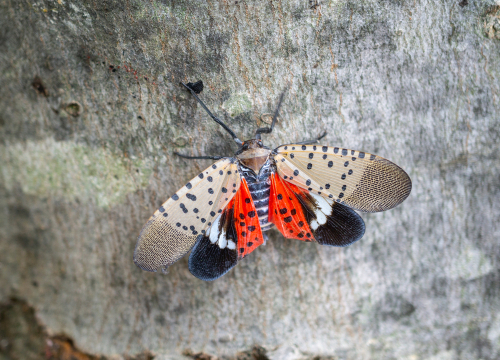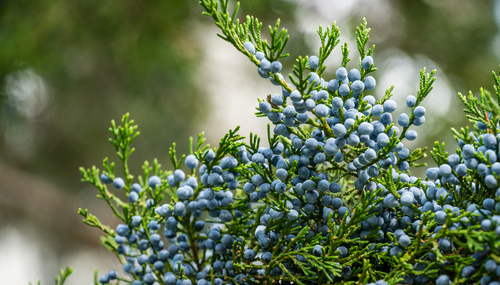Countryside Corner
Neighborly Garden News

Issue 115
November 2021
Need plant help? There’s an app for that!
Who can you ask when you’re in the middle of weeding; is this plant a true weed or something to save? If you have access to a smart phone, you can have a garden advisor at your fingertips. For inquiring gardeners, having a few choice phone apps, may boost your gardening know-how.
I think many people are beyond the task of searching through text books for answers to our questions. Using our phone camera, we can now identify thousands of different plants and related gardening topics with a few clicks. Here a few helpful and free apps (a few may have premium upgrades available for a fee) that gardeners and all outdoor enthusiasts can turn to when looking for plant information.
WHAT’S THAT FLOWER
Just like the name says, this app specializes in identifying flowers. It can help you identify where they typically grow, and whether they are poisonous or not.
PLANTIX
This app is geared towards the grower among us. It can help you diagnose and treat troubled plants. There is a database of best growing practices, and real-time chats with agricultural experts to help with your questions.
AGROBASE
Not sure if that weed is a really a weed or a flower? Agrobase is the app for you. This app is specific for identifying weeds and the insects that live on them. It can also assist in identifying plant diseases and how certain pesticides affect them.
PICTURETHIS
PictureThis uses advanced AI to turn plant photos into positive identification. Provides plant encyclopedia and importantly, potential toxicity to pets.
LEAFSNAP
This app is a field guide to all types of foliage plants. Developed by teams of plant experts from Columbia University, the University of Maryland, and the Smithsonian Institution, this app uses AI technology to identify plants based solely on photos of their leaves.
November’s ‘to-do’ list
It felt a lot like fall today, after a spell of unusually warm weather. Our typical fall leaf colors are very late in developing, and in many cases absent. In the valley, many of the trees simply dropped their leaves, without changing color at all. So far we’ve not had a killing frost, and there is still some produce left in the veggie garden, but I’m sure any day now the frost will take everything down, except the kale. As long as the ground is still workable you can continue dividing and planting; did you get your garlic planted? I planted 87 cloves of garlic, which will grow into 87 individual heads by next July. Let’s hope we won’t see any snow this month, and we can complete our garden chores before the weather turns wintery.
Last winter rodents caused a lot of damage to established plants throughout my yard and garden. They gnawed their way through the roots of otherwise hardy roses, shrubs, and perennials. This year I plan to lay down some protection for the most vulnerable plants, and make the yard less inviting to the rodents.
Target areas where rodents might congregate and do damage over the winter. Remove any heavy buildup of fallen plants and wet matted down leaves, attractive places for them to hide. (Pay particular attention to areas around house foundations!) If you’ve had severe rodent damage previously, you may have to put out traps to reduce the population. Protect young, and thin barked tree species with hardware cloth secured around the lower trunk. This will help stop rodents from gnawing, and thus ‘girdling’ trees. When trees are girdled, bark has been mostly or completely removed around the entirety of the trunk, and can kill the tree. I plan to make my own rodent repellent, using castor oil which is the main constituent of many commercial vole and mouse repellents. It repels because rodents don’t like the odor or taste of castor oil. Mix one part castor oil and one part dish soap with a gallon of water, use this mixture to liberally soak the soil around the base of the plant you want to protect.
Clear away any dropped fruit, and other debris from beneath your fruit trees and shrubs. Left over fruit can attract gnawing mammals, as well as harbor overwintering fruit tree pests. Toss the fruit on the compost pile.
If you’d like to set up a living Christmas tree this year, dig a hole now before the ground freezes, and mulch the hole with straw covered with a tarp to keep the soil workable. It may also be helpful to stockpile some unfrozen soil to backfill the planting hole.
Protect your foundation shrubs from snow falling off the roof. Heavy snow and ice can flatten a mature plant in seconds. A simple wooden ‘teepee’ will provide a safe haven, and is re-useable year-to-year. Call our office if you’d like to have us make you a set. (413) 458-5586
Keep watering recently planted woody plants until the ground freezes. Evergreens, especially, need to go into winter well hydrated to avoid winter injury, which happens when they can’t get water from the frozen soil. Evergreens may benefit from a timely application of an anti-desiccant type spray, to help minimize winter drying syndrome.
Don’t cut back your ornamental grasses! Leave them standing to provide habitat for wildlife and winter interest. Grasses with seed heads provide a snack for the birds; plan to cut them down to the ground in the spring. Pull or cutback any remaining annuals, but leave the seed-heads of those you wish to self-sow around the garden.
Now that roses are dormant, cut the branches back to about 12-18” tall. It’s helpful to tie the branches together with sturdy twine, so they don’t get broken and bent during winter storms. If you want to mulch the bud union of more tender rose plants, wait until after you apply rodent repellent (if you need it) and the ground is frozen.
Now that the leaves are down check out your trees for any weaknesses; broken or split branches that should be removed before winter storms pull them down. Pay particular attention to any trees adjacent to buildings, driveways or power lines.
Need help getting your home and yard ready for the holidays? Countryside Landscape & Design can help with outdoor and indoor decorating; wreaths, Balsam roping, trees and lights.
Please call our office: (413) 458-5586
Be on the lookout for the Spotted Lanternfly
The MA Dept. of Agricultural Resources (MDAR) announced on 9/28/21 that a small, established, and breeding population of the invasive spotted Lanternfly (Lycorma delicatula) was detected in Worcester County, MA in the city of Fitchburg. This finding was confirmed by state officials.
The spotted Lanternfly, also known as the Lanternmoth, is neither a fly nor a moth; it is classified in the insect order Hemiptera, closely related to cicadas, aphids and plant hoppers. This insect was first found in PA in 2014, and has since spread to Delaware, New York, Virginia, and New Jersey. Spotted Lanternfly is considered an invasive non-native insect in the USA. Spotted Lanternfly is native to India, China and Vietnam; it was detected in South Korea and Japan, just prior to being discovered in the USA. In South Korea, it is considered a highly destructive invasive pest of grapes and peaches.
This insect has been found on over 70 species of plants, including many crop plants and hardwood species. They prefer to feed and mate on Ailanthus altissima, commonly known as ‘Tree of Heaven’ which is also an invasive Asiatic plant. Unfortunately, the Lanternflies don’t stay on Ailanthus after mating; they disperse rapidly to lay their eggs on just about any other plant. If you know of Tree of Heaven (Ailanthus altissima) growing nearby, check the tree for adults and egg masses and report anything suspicious using the link at the bottom of this section. With that said, spotted lanternfly adults and eggs masses (and immatures when active) may be found just about anywhere.
Learn to identify the ‘Tree of Heaven’, Ailanthus altissima : https://extension.psu.edu/tree-of-heaven
The adults and immatures of this species damage host plants by feeding on sap from stems, leaves, and the trunks of trees. Trees may be found with sap weeping from the wounds caused by the insect’s feeding. The sugary secretions (excrement) created by this insect may coat the host plant, later leading to the growth of sooty mold. Insects such as wasps, hornets, bees, and ants may also be attracted to the sugary waste created by the Lanternflies, or sap weeping from open wounds in the host plant. Host plants have been described as giving off a fermented odor when this insect is present.

Lanternfly Nymph

Lanternfly adult
Residents and professionals living and working across the Commonwealth should learn the life stages of the spotted lanternfly and be able to identify their eggs, immatures, and adults. At this time, it is particularly valuable to learn how to ID spotted lanternfly adults and egg masses. Umass extension services describe the insect as follows: adults are 1 inch long and ½ inch wide at rest. The forewing is gray with black spots of varying sizes and the wing tips have black spots outlined in gray. Hind wings have contrasting patches of red and black with a white band. The legs and head are black, and the abdomen is yellow with black bands. Both the immature insect and the adult are quite visually striking. Adults are especially so when they have been startled and expose the bright red coloration on the hind wings. When the adult is at rest, particularly on the trunk of the Tree of Heaven, their gray, spotted color may actually cause them to blend in with their surroundings. Freshly laid egg masses appear as if coated with a white substance. As they age, the egg masses look as if they are coated with gray mud, which eventually takes on a dry/cracked appearance.

Lanternfly adults at rest-wings folded
If you see this insect or the egg masses, it must be reported. Even if you’re unsure, it’s better to launch an investigation to ward off this noxious pest, than ignore the possibility of an infestation.
For additional information, or to report a sighting of Spotted Lanternfly please refer to the following link: https://massnrc.org/pests/slfreport.aspx
Thinking ahead…
Evergreen trees enhance the fall and winter landscape when the deciduous trees are bare and grey. As a backdrop to fall foliage colors, or a windbreak screen through winter winds, evergreens are the only trees showing any sign of life until spring returns. Most evergreens are very adaptable to their environment; there is definitely an evergreen perfect for your yard or garden.
Psuedotsuga menziesiior Douglas fir is often grown as a Christmas tree; it has soft short needles, and a uniform growth habit when young. As it matures, Douglas fir will assume a pyramidal shape. Douglas fir does best with some protection from the wind, and prefers consistently moist soil. This native evergreen will grow to 40-80’ tall x 12-20’ wide.

Douglas fir
Picea orientalis or Oriental Spruce is a graceful, slow growing tree with a narrow, semi-weeping habit. Lustrous dark green needles, are very short and densely set along the stem. Another feature: the colorful cones or flowers of the mature tree. Tolerant of poor, gravelly or clay soil, grows to 50-60’ tall x 10-15’ wide.

Oriental Spruce
Pinus flexilis or Limber pine is a hardy native pine. Very cold hardy, it has dark blue-green needles, it prefers moist yet well-drained soil, can be grown on rocky slopes in full sun to partial shade. This slow growing evergreen tree will reach 30-50’ tall x 15-35’ wide at maturity.

Limber pine
Thuja occidentalis or Eastern Arborvitae has been bred to mature at varying heights, depending on the cultivar. This native tree is typically easy to grow, vigorous, and will tolerate a wide range of soil conditions, but requires full sun to grow into thick specimens. Soft, flattened, deep green needles, form a very dense natural screen. This quality makes Arborvitae one of the best trees for screening, and windbreaks. It is recommended to choose a named cultivar; and thus your desired height range, than the species, unless you truly want a 40’ tall living fence. Arborvitae grow 12-40’ tall x 4-15’ wide at maturity, depending on the cultivar.

Eastern Arborvitae
Juniperus virginiana ‘Emerald Sentinel’: ‘Emerald Sentinel’ red cedar has a narrow pyramid shape, growing 15-20’ tall and 7-8’ wide at its base. This Juniper cultivar, ‘Emerald Sentinel’ is freer branching than the straight species, so it has a very dense and full appearance. The needle color is an exceptional dark green; as a bonus, this cultivar bears a heavy crop of eye-catching, dusty-blue juniper berries. These cedar-scented fruits ripen in late summer and remain through the winter, and are very attractive to our local birds.

Juniperus virginiana-Eastern Red Cedar

Eastern Red Cedar berries